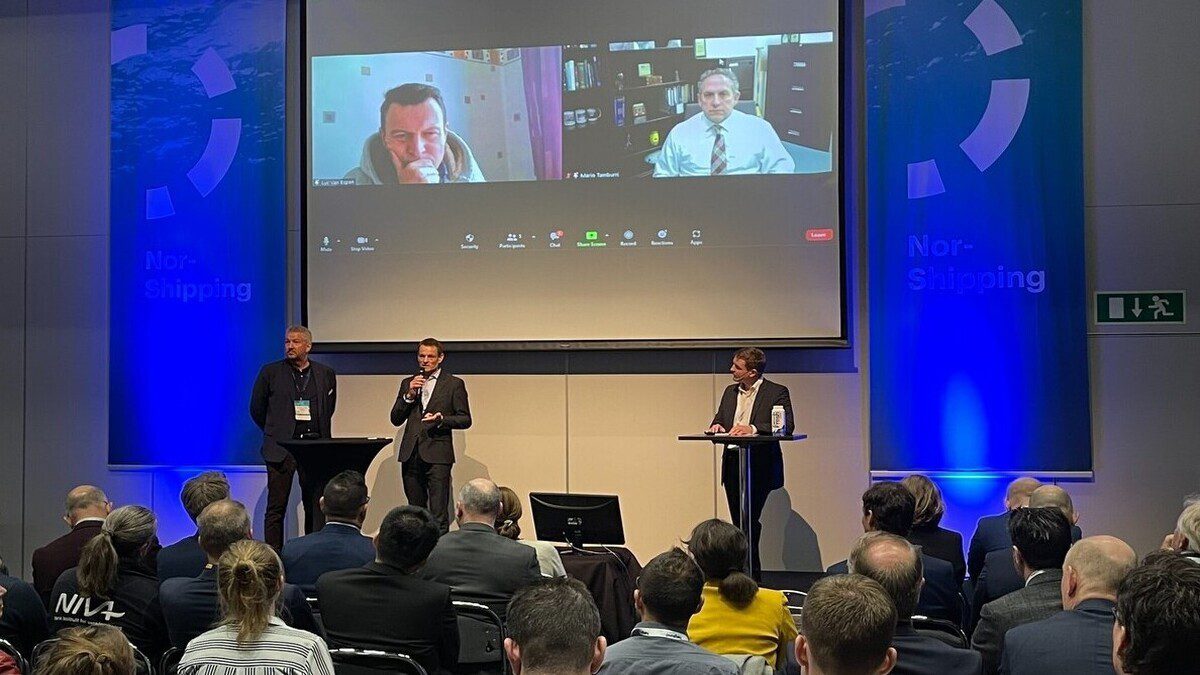 The CHI launch event at Nor-Shipping (source: Jotun)
The CHI launch event at Nor-Shipping (source: Jotun)
NGO Bellona Foundation and coatings manufacturer Jotun are leading the Clean Hull Initiative (CHI), a new industry consortium focused on biofouling, launched at the recently concluded Nor-Shipping trade fair in Oslo
Severe underwater biofouling can increase a vessel’s fuel consumption by as much as 40%, boosting already high CO2 emissions. The accumulation of marine life may also spread invasive aquatic species in environments they are transported to, affecting biodiversity in different locations.
However, there is no single industry standard addressing this at present. CHI aims to develop a standardised way for proactive hull cleaning to tackle biofouling.
CHI project manager, and senior advisor to the Bellona Foundation, Runa Skarbø explained, “We believe the standard is an important means to establish proactive cleaning as part of the biofouling management toolbox, to drive innovation and the market for commercial proactive hull cleaning solutions.”
Ms Skarbø said regulatory inconsistencies worldwide create a major barrier to ship operators wanting to manage biofouling proactively, and for inwater cleaning (IWC) providers operating in multiple locations.
Compounded by the absence of any international regulation or standard for hull cleaning, there is no international regulating body for ports and anchorages where IWC takes place. And if they exist at all, local biofouling /or IWC management guidelines vary hugely.
However, specialist director in the Norwegian Ministry of climate and environment, Sveinung Oftedahl said the IMO biofouling guidelines are being revised to increase their uptake and effectiveness.
Mr Oftedahl said, “The revision of the guidelines is currently being undertaken by a dedicated sub-committee and the work is progressing well, with completion targeted next year,” adding that reccomendations to prevent the spread of invasive species will be a “key issue” and will be “partly based on previous experience with, for example, the standard in the Ballast Water Management Convention.”
The launch event saw other presentations. Jotun senior surface scientist Angelika Brink highlighted the difference in the extent of biofouling based on predictions and computer modelling, and perception of actual biofouling. She said while models may appear to overestimate the amount and impact of biofouling, it is likely that the opposite is true, and the impact of biofouling is much higher than even the predictions.
Showing a graph detailing Glofouling’s study of the impact of biofouling on emissions, she indicated a point on it and said many would feel a 55% increase in greenhouse gas emissions caused by just 1% biofouling coverage is impossibly high.
Ms Brink went on to cover the difficulties in quantifying fouling coverage based on observation, particularly when different types of fouling were present. She concluded that actual data collected in future would be improved by better correction for environmental factors, better understanding and estimation of coverage and types of fouling and more knowledge of surface effect interaction.
CHI members include Jotun, iKnowHow, Armach Robotics, Notilo Plus, Hapag-Lloyd, Wallenius Wilhelmsen, DNV, the Mærsk Mc-Kinney Møller Centre for Zero Carbon Shipping, Litehauz, Port of Antwerp Bruges, ShipShave, VesselCheck, LimnoMar, Endures, CleanSubSea, the University of Maryland Centerfor Environmental Science (Alliance for Coastal Technologies and Maritime Environmental Resource Centre, /MERC) and University of Strathclyde.
The alliance is open to new members and interested parties are asked to contact Runa Skarbø.





